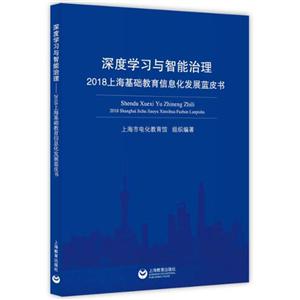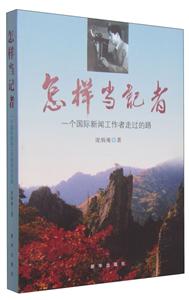Motion Control of Biomietic Swimming Robots-高机动仿生机器鱼设计与控制技术

|
Motion Control of Biomietic Swimming Robots-高机动仿生机器鱼设计与控制技术作者:喻俊志 开 本:16开 书号ISBN:9787568053365 定价:198.0 出版时间:2019-09-01 出版社:华中科技大学 |
Motion Control of Biomietic Swimming Robots-高机动仿生机器鱼设计与控制技术 本书特色
本书围绕仿生机器鱼的高机动运动,结合仿生技术和智能控制方法,对仿生机器鱼的研制过程和机动控制进行了系统阐述,主要包括六方面内容:仿生鱼体波及鱼体形态学设计、机器鱼二维高机动精准控制、基于仿生CPG的机器鱼运动控制、机器鱼的三维机动转向控制、机器海豚俯仰及滚翻控制、机器海豚跃水运动控制。本书的每一章对所用机器鱼及机器海豚的平台研制、算法实现及实验验证均进行了详细介绍。各部分的内容既相互联系又相互独立,读者可根据自己的需要选择学习。
Motion Control of Biomietic Swimming Robots-高机动仿生机器鱼设计与控制技术 内容简介
本书列选中国政府“中国图书对外推广计划”,内容全面、系统、新颖、实用,不仅适用于普通高等院校信息科学、自动化、机电工程及相关专业的研究生、本科生及专科生的机器人学习课程,也可作为广大致力于机器人研究的科研人员和技术工作者了解水下仿生机器人基础知识及关键技术的参考资料和辅助读物。
Motion Control of Biomietic Swimming Robots-高机动仿生机器鱼设计与控制技术 目录
1 Introduction ........................................... 11.1 Introduction ........................................ 1
1.2 Hydrodynamic Modeling and Testing ..................... 3
1.2.1 Hydrodynamic Modeling ......................... 4
1.2.2 Hydrodynamic Experimental Techniques.............. 5
1.3 Kinematic Modeling and Control ......................... 8
1.3.1 Kinematic Measurement of Fish Swimming ........... 8
1.3.2 Motion Control ................................ 9
1.4 Learning Control and Motion Optimization ................. 11
1.4.1 Learning Fishlike Swimming ...................... 11
1.4.2 Motion Optimization ............................ 13
1.5 Coordination ....................................... 14
1.5.1 AFSA ....................................... 15
1.5.2 Coordinated Control of Multiple Robotic Fish .......... 16
1.6 Concluding Remarks.................................. 18
References ............................................. 19
2 Bioinspired Fish Body Wave Model Considering Linear Density ... 25
2.1 Introduction ........................................ 25
2.2 Problem Formulation ................................. 27
2.2.1 An Overview of Fish Body Wave ................... 27
2.2.2 Necessary Conditions of Steady Swimming ............ 28
2.3 Design of Body Wave Considering Linear Density ............ 29
2.4 Design of Fish Morphology: Two Cases Studies ............. 32
2.4.1 Design of Main Body ........................... 32
2.4.2 Formation of Caudal Fin and Its Counterpart........... 35
2.4.3 Formation of Pectoral Fin and Its Counterpart .......... 36
2.4.4 Formation of Pelvic Fin and Its Counterpart ........... 36
v
2.5 Simulation and Result Analysis .......................... 37
2.6 Discussion ......................................... 42
2.7 Concluding Remarks.................................. 43
References ............................................. 43
3 Implementing Flexible and Fast Turning Maneuvers
of Multijoint Robotic Fish ................................. 47
3.1 Introduction ........................................ 47
3.2 Analysis and Control of C-Start.......................... 49
3.2.1 Design of Stage 1 .............................. 50
3.2.2 Design of Stage 2 .............................. 53
3.2.3 Design of Stage 3 .............................. 55
3.2.4 Closed-Loop Control of the Turning Angle ............ 56
3.3 Experiments and Results ............................... 58
3.3.1 Experimental Setup ............................. 58
3.3.2 Experiments on the Blunt Fish ..................... 60
3.3.3 Experiments on the Slim Fish ...................... 63
3.4 Discussion ......................................... 66
3.5 Concluding Remarks.................................. 67
References ............................................. 68
4 CPG-Based Swimming Control ............................. 71
自然科学 物理学 理论物理学
在线阅读
- 最新内容
- 相关内容
- 网友推荐
- 图文推荐
零零教育社区:论坛热帖子
| [高考] 2022 西安电子科技大学《软件工程》大作业答案 (2022-04-25) |
| [家长教育] 孩子为什么会和父母感情疏离? (2019-07-14) |
| [教师分享] 给远方姐姐的一封信 (2018-11-07) |
| [教师分享] 伸缩门 (2018-11-07) |
| [教师分享] 回家乡 (2018-11-07) |
| [教师分享] 是风味也是人间 (2018-11-07) |
| [教师分享] 一句格言的启示 (2018-11-07) |
| [教师分享] 无规矩不成方圆 (2018-11-07) |
| [教师分享] 第十届全国教育名家论坛有感(二) (2018-11-07) |
| [教师分享] 贪玩的小狗 (2018-11-07) |






